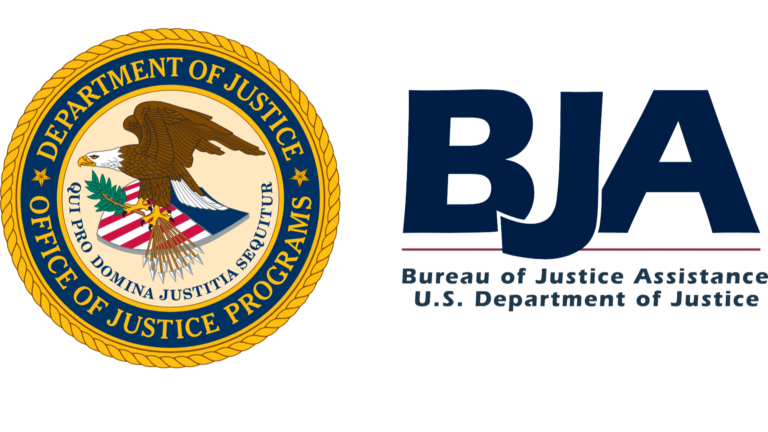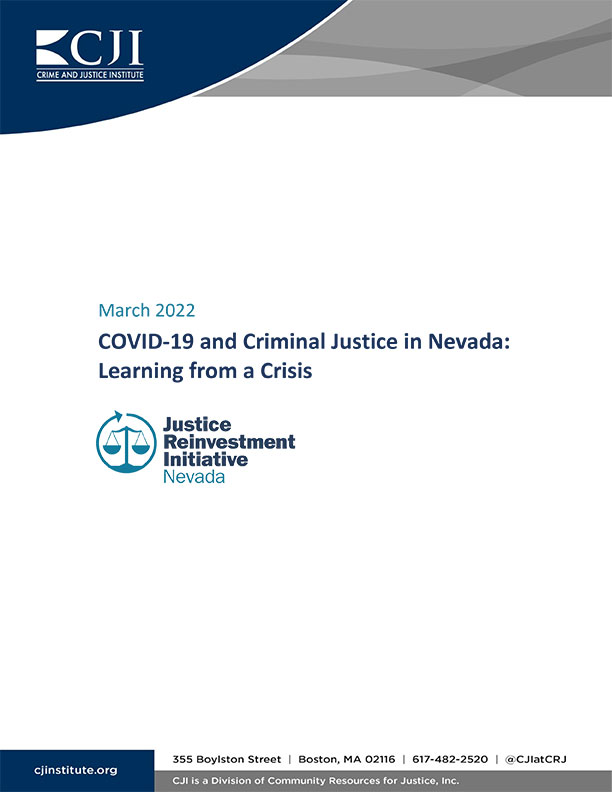COVID-19 and Criminal Justice in Nevada: Learning from a Crisis
Executive Summary1
Beginning in 2018, to address significant 10-year growth in its prison population, Nevada participated in the Justice Reinvestment Initiative (JRI), a public-private partnership funded by the Bureau of Justice Assistance and The Pew Charitable Trusts. As a result of the JRI effort, Nevada passed Assembly Bill 236, a piece of legislation that took effect on July 1, 2020, when much of the state’s normal operations were halted by the COVID-19 pandemic.
As in the rest of the country, the effects of the pandemic on Nevada’s justice system were dramatic and far-reaching: statewide shutdowns led to fewer officers on the streets and fewer case filings and slowed court processes. In the corrections system, state agencies struggled at times to find the right balance of policies to protect individuals in custody and staff and elected not to increase releases in order to reduce population density. Oversight of criminal justice policy responses to the pandemic was diffuse, leaving agencies and localities largely to determine themselves how to respond to the new and challenging circumstances.
In the spring of 2021, Nevada state leaders sought technical assistance from the Crime and Justice Institute (CJI), asking CJI to conduct an assessment of how the pandemic affected not only the implementation of AB 236, but also the state’s criminal justice system as a whole. Nevada also asked CJI to assess state and local policy changes that occurred in response to the pandemic, to determine their efficacy and potential sustainability, and their effect on the JRI changes.
To fulfill this request, CJI conducted a qualitative and quantitative assessment, which included analyzing data from several state agencies and speaking to stakeholders working in law enforcement, jails, courts, corrections, and community supervision. Below are some key findings of that assessment:
- Monthly Nevada prison admissions were 27 percent lower on average from March through December 2020 than before the pandemic. This decrease was likely driven by a reduced incidence of crime in early 2020, as well as law enforcement, prosecutors, and courts focusing their resources on the most serious offenses.
- Prison releases also decreased during the pandemic as the state elected not to decrease the density of Nevada prisons by safely releasing individuals, and instead focused their policy responses on protective and restrictive measures within NDOC facilities.
- Courts underwent a widespread shift to remote proceedings, which resulted in both helpful efficiencies and ongoing procedural challenges that have yet to be fully resolved, while pandemic related closures exacerbated an existing backlog of cases in the state’s busiest courts.
- While many of the changes from AB 236 took effect unencumbered by the pandemic, certain provisions – specifically related to community supervision and revocation – were implemented inconsistently across the state.
According to projections developed following the passage of AB 236 in 2019, estimates predicted a 2028 Nevada prison population of just over 14,000 people – 1,000 fewer prison beds than projected without the changes of AB 236. Even before COVID-19, Nevada’s prison population showed a gradual, near 3 percent decline between 2017 and 2019; however, many of the massive changes wrought by the pandemic will have an even greater impact on the state’s future prison population. The current report focuses on the past and present effects of COVID-19 on Nevada’s criminal justice system. A subsequent report will focus exclusively on the pandemic’s effect on future prison population numbers and include revised projections.
This assessment led to 12 policy recommendations intended to assist Nevada in responding to the continued threat of COVID-19 and future public health crises. These are in line with the policy changes enacted through AB 236, but focus specifically on:
- Expanding local practices adopted in Nevada and in other jurisdictions to develop long-term solutions that will fortify the justice system against future large-scale crises;
- Reducing the density of prison and jail environments to mitigate the spread of airborne viruses and ensure corrections administrators can keep both staff and the incarcerated population safe;
- Prioritizing cooperation and coordination between the various components of the public safety, public health, and justice systems.
Endnotes
- This report has been updated to include additional information concerning the calculation of COVID-19 death rates within prison populations, and to revise language regarding the costs of vaccines to individuals in custody.

This project was supported by Grant No. 2015-ZB-BX-K002 awarded by the Bureau of Justice Assistance. The Bureau of Justice Assistance is a component of the Department of Justice’s Office of Justice Programs, which also includes the Bureau of Justice Statistics, the National Institute of Justice, the Office of Juvenile Justice and Delinquency Prevention, the Office for Victims of Crime, and the SMART Office. Points of view or opinions in this document are those of the author and do not necessarily represent the official position or policies of the U.S. Department of Justice.

The Crime and Justice Institute (CJI), a division of Community Resources for Justice, works to improve public safety and the delivery of justice by providing nonpartisan technical assistance, research, and other services to improve outcomes across the spectrum of the adult and juvenile justice systems, from policing and pretrial through reentry. CJI provides direct technical assistance, assessment, implementation, research, data analysis, training, facilitation, and more. We take pride in our ability to improve evidence-based practices in public safety agencies and gain organizational acceptance of those practices. We create realistic implementation plans, put them into practice, and evaluate their effectiveness to enhance the sustainability of policies, practices, and interventions. Find out more at www.crj.org/cji.

